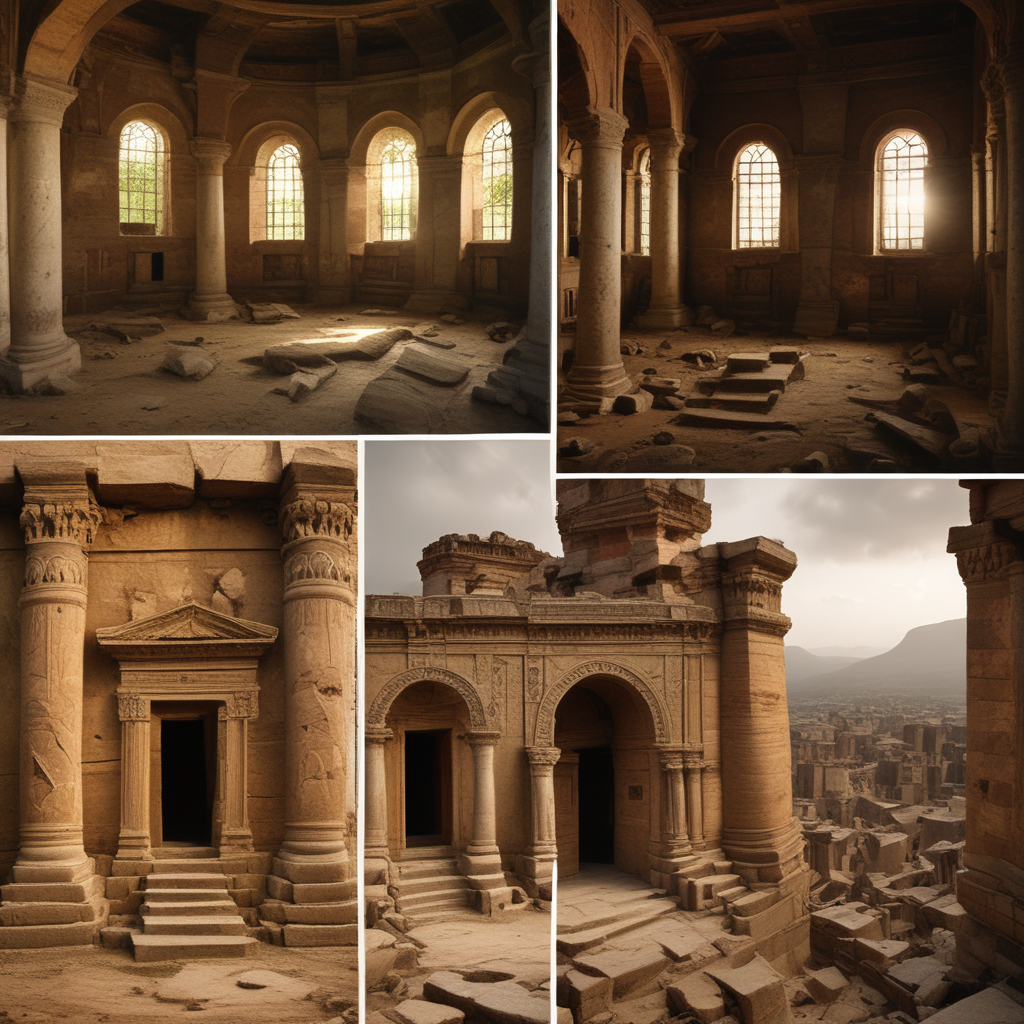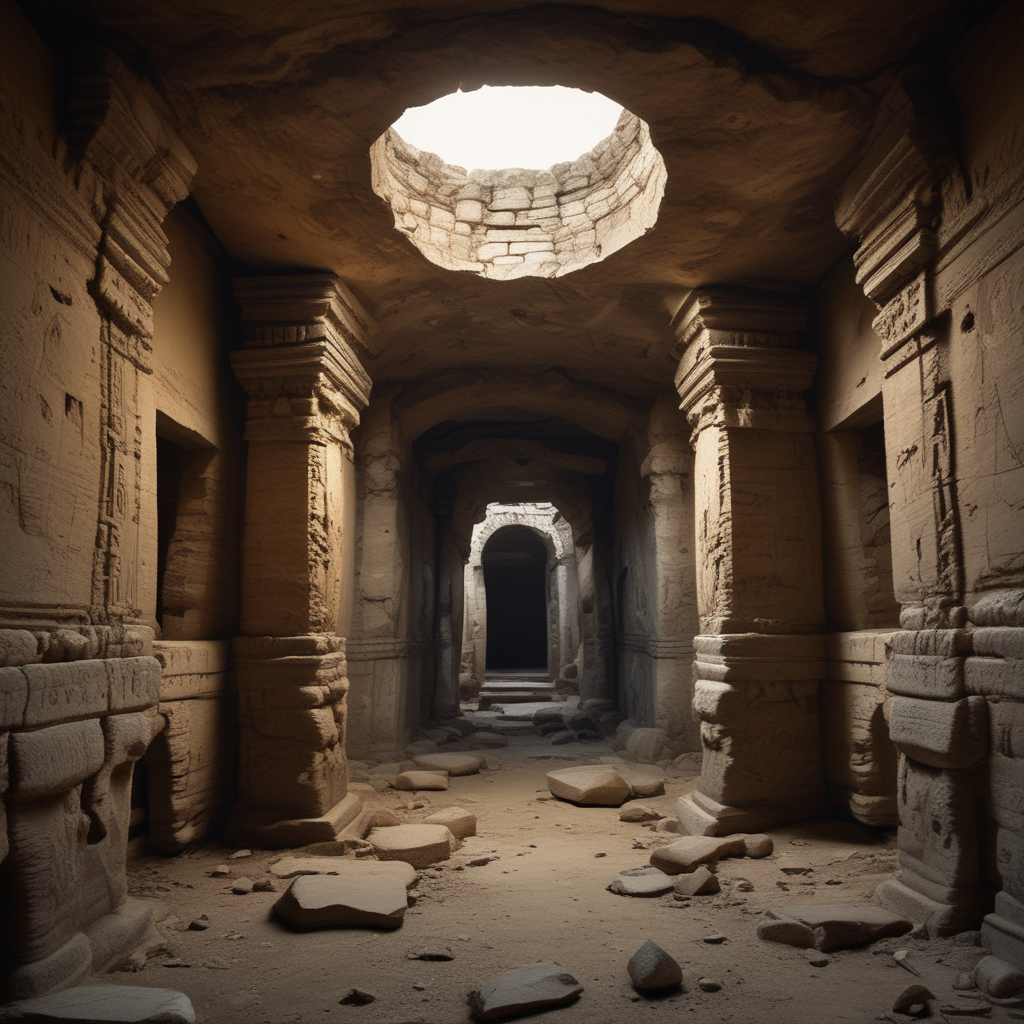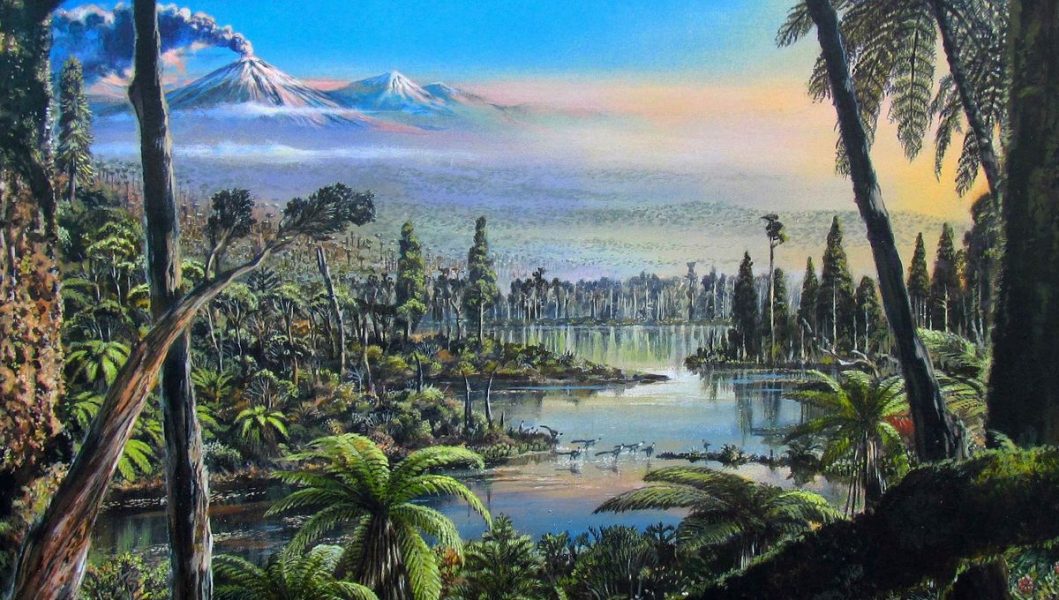Unraveling the Enigma: Ancient Places and Buildings Shrouded in Mystery

Unraveling the Enigma: Ancient Places and Buildings Shrouded in Mystery
Decoding the Secrets of Stonehenge: Unraveling the Enigma of the Ancient Stone Circle
For centuries, ancient places and buildings have captivated the human imagination, leaving us in awe of their grandeur and mystery. From the pyramids of Egypt to the Stonehenge of England, these structures have stood the test of time, beckoning us to unravel their secrets and understand their enigmatic past. In this article, we delve into the intriguing world of ancient places and buildings, exploring their history, significance, and the ongoing debates surrounding their interpretation.
Stonehenge, located in the English county of Wiltshire, is one such enigma that has fascinated scholars and laypeople alike. This ancient stone circle, dating back to around 2500 BC, is a UNESCO World Heritage Site and a symbol of British heritage. The site comprises a series of standing stones, arranged in a circular pattern, with a central monument known as the Altar Stone. The stones, weighing up to 25 tons, were transported from distant quarries, and their precise placement and alignment remain a subject of intense debate.
The significance of Stonehenge is multifaceted, with various theories attempting to explain its purpose. Some scholars believe that it served as a burial ground, with the remains of the dead interred within the stones. Others suggest that it was a place of worship, with the stones representing deities or celestial bodies. Still, others argue that it was a site for astronomical observations, with the alignment of the stones corresponding to the movements of the sun and moon.
The interpretation of Stonehenge is not without controversy, with different schools of thought vying for dominance. The archaeologist and historian, Aubrey Burl, has argued that Stonehenge was a place of healing, with the stones possessing mystical powers that could cure the sick. This theory is based on the presence of burials and the use of stones in traditional healing practices. However, this interpretation has been criticized by some scholars, who argue that there is no concrete evidence to support this claim.
Another contentious issue surrounding Stonehenge is its construction. The transportation and erection of the stones have been a subject of intense debate, with various theories attempting to explain how this was achieved. Some scholars suggest that the stones were transported using rollers and sledges, while others argue that they were lifted using cranes or other mechanical devices. However, the lack of evidence to support these theories has led some scholars to suggest that the stones were transported using a combination of methods, including human labor and natural forces such as water and ice.
The ongoing debates surrounding Stonehenge highlight the complexity and ambiguity of ancient places and buildings. While we can learn a great deal about the past from these structures, their interpretation is not always straightforward. The lack of written records and the passage of time have left us with fragmentary evidence, forcing us to rely on conjecture and interpretation. This is not to say that we should abandon our efforts to understand these structures, but rather that we should approach them with a critical and open-minded perspective.
In conclusion, ancient places and buildings such as Stonehenge continue to captivate and intrigue us, inviting us to unravel their secrets and understand their enigmatic past. While the interpretation of these structures is not without controversy, they remain a testament to the ingenuity and creativity of our ancestors. As we continue to explore and study these ancient wonders, we can gain a deeper appreciation for the rich and complex history of our world.
In this blog post, we’ll delve into the fascinating history and mystery of Stonehenge, the iconic prehistoric monument in Wiltshire, England. From its origins and purpose to the latest scientific discoveries, we’ll explore the enigma of this ancient place and what it reveals about our past

For centuries, Stonehenge has captivated the imagination of people from all walks of life. This enigmatic prehistoric monument, nestled in the rolling hills of Wiltshire, England, has left historians, archaeologists, and scientists puzzled for generations. Its origins, purpose, and construction methods have been shrouded in mystery, leaving us to unravel the enigma of this ancient place.
Stonehenge is a circle of standing stones, each weighing several tons, arranged in a precise pattern. The monument is believed to have been built between 3000 and 2000 BC, during the Neolithic period. The exact reason for its construction remains a subject of intense debate, with theories ranging from a sacred burial ground to an astronomical observatory.
One of the most intriguing aspects of Stonehenge is its alignment with the solstices and equinoxes. The stones are arranged in a way that aligns with the rising and setting sun during these important astronomical events. This suggests that the monument may have served as an astronomical observatory, allowing its builders to track the movements of the sun and moon.
Another fascinating aspect of Stonehenge is the way in which the stones were transported and erected. The stones were quarried over 200 miles away, in the Preseli Mountains of Wales, and transported to Wiltshire. The exact method of transportation is still a subject of debate, with theories ranging from a simple roll along the ground to a more complex system of boats and sledges.
Recent scientific discoveries have shed new light on the enigma of Stonehenge. In 2018, a team of archaeologists discovered a previously unknown stone circle, known as Durrington Walls, just three miles from Stonehenge. This discovery suggests that Stonehenge may have been part of a larger ritual landscape, with multiple stone circles and monuments spread out over a wide area.
Another recent discovery has shed new light on the purpose of Stonehenge. In 2019, a team of archaeologists discovered a large pit filled with human remains, just a few hundred meters from Stonehenge. This discovery suggests that the monument may have served as a sacred burial ground, with the remains of the dead being interred in the surrounding landscape.
Despite these new discoveries, many questions about Stonehenge still remain unanswered. For example, we still don’t know who built the monument, or why they chose this particular location. We also don’t know how the monument was maintained and used over time, or whether it served different purposes at different times in history.
In conclusion, Stonehenge remains an enigma, a fascinating window into our past that continues to captivate and intrigue us. Its origins, purpose, and construction methods continue to be shrouded in mystery, leaving us to unravel the enigma of this ancient place. As new discoveries are made and new theories are proposed, we can only hope that we will one day unlock the secrets of this enigmatic monument and gain a deeper understanding of our past.
The Hanging Gardens of Babylon: Unraveling the Enigma of the Ancient Wonder
Throughout history, there have been countless ancient places and buildings that have left us in awe and wonder. Some have been lost to time, while others still stand today, shrouded in mystery and intrigue. In this article, we will delve into the enigma of three such ancient wonders, exploring their history, significance, and the many questions that still surround them.
First on our list is the Hanging Gardens of Babylon, one of the Seven Wonders of the Ancient World. According to ancient Greek historian Diodorus Siculus, the gardens were built by King Nebuchadnezzar II as a gift to his wife, Amytis, who longed for the lush greenery of her homeland. The gardens were said to be terraced and adorned with hanging gardens, fountains, and irrigation systems that brought water from the nearby Euphrates River.
Despite its legendary status, the Hanging Gardens of Babylon remain a subject of controversy. Some historians doubt their existence, citing a lack of evidence and the fact that no ancient Babylonian texts mention them. Others argue that the gardens were a myth, created by the Greeks to illustrate the grandeur and sophistication of the Babylonians.
Regardless of their authenticity, the Hanging Gardens of Babylon continue to captivate the imagination. They represent a fusion of art, engineering, and horticulture, a testament to the ingenuity and creativity of ancient civilizations. They also serve as a reminder of the fragility of history and the importance of preserving our cultural heritage.
Next on our list is the Moai statues of Easter Island, a group of over 900 stone sculptures that dot the landscape of the remote Polynesian island. The Moai are believed to have been carved by the Rapa Nui people between the 13th and 16th centuries, and their purpose and meaning remain a subject of debate.
Some scholars suggest that the Moai were created as a form of ancestor worship, while others argue that they served a more practical purpose, such as marking territorial boundaries or commemorating important events. Regardless of their function, the Moai are a testament to the skill and resourcefulness of the Rapa Nui people, who carved the statues from volcanic rock using only stone tools and human labor.
The Moai also raise questions about the Rapa Nui people’s society and culture. How did they manage to transport and erect such massive statues, given the island’s lack of resources and the absence of written records? What led to the decline of the Rapa Nui civilization, and why did they abandon their traditional practices and beliefs?
Finally, we turn our attention to the Nazca Lines of Peru, a series of intricate geoglyphs etched into the desert floor. The Nazca Lines depict a variety of animals, plants, and geometric shapes, and their purpose and meaning remain a subject of fascination and speculation.
Some scholars suggest that the Nazca Lines were created as a form of religious or astronomical symbolism, while others argue that they served a more practical purpose, such as marking water sources or guiding migratory birds. Regardless of their function, the Nazca Lines are a testament to the Nazca people’s artistic and mathematical abilities, as well as their deep connection to the natural world.
The Nazca Lines also raise questions about the Nazca people’s society and culture. How did they manage to create such intricate designs using only simple tools and techniques? What led to the decline of the Nazca civilization, and why did they abandon their traditional practices and beliefs?
In conclusion, the Hanging Gardens of Babylon, the Moai statues of Easter Island, and the Nazca Lines of Peru are just a few of the many ancient wonders that continue to captivate and intrigue us. They represent a fusion of art, engineering, and culture, a testament to the ingenuity and creativity of ancient civilizations. They also serve as a reminder of the fragility of history and the importance of preserving our cultural heritage. As we continue to unravel the enigma of these ancient wonders, we gain a deeper appreciation for the richness and complexity of our shared human history.





